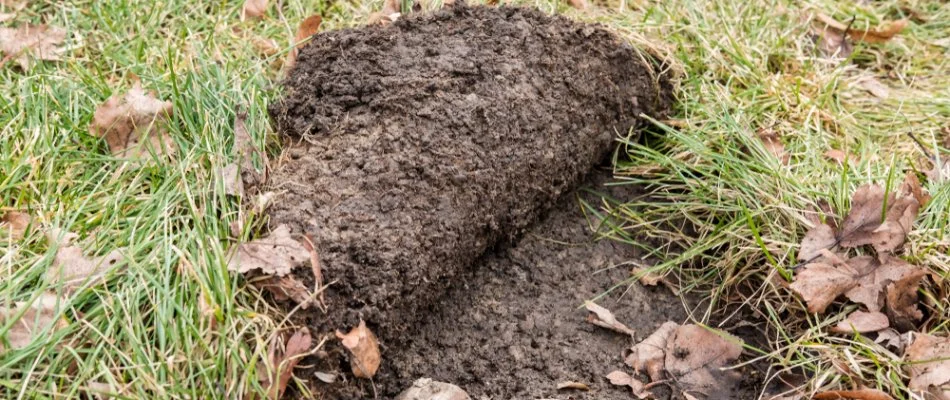Grub infestations are a common issue faced by residential and commercial property owners in Ohio. These small, C-shaped larvae feed on the roots of your grass which can lead to significant damage. Signs of a grub infestation include spongy turf that can be lifted like a carpet, the emergence of brown spots, and a potential increase in animal activity on your lawn as critters are attracted to the grubs as a food source. If you suspect a grub infestation, it is crucial to seek professional assistance promptly, as these pests can cause extensive harm to your lawn.
What are the telltale signs of a grub infestation?

Identifying a grub infestation in your lawn can be crucial in addressing the issue promptly. One of the most common indicators to look out for is the presence of brown patches or dead grass in your lawn. Grubs feed on the roots of grass, causing it to weaken and die. As a result, you may notice discolored areas that fail to respond to watering or fertilization. When you pull up the affected grass, you may discover severed roots, further confirming the presence of grubs.
When you’re walking on an infested lawn, you may notice that the turf feels spongy or uneven underfoot. The lack of strong root systems due to grub feeding makes the grass less firm and resilient. This can lead to an unpleasant walking experience and make it challenging to maintain an even and healthy lawn surface.
Another sign of a grub infestation is an increase in animal activity. Animals like skunks, raccoons, and birds are attracted to lawns infested with grubs as they serve as a food source. These animals will dig up the turf, searching for grubs to feed on. As a result, you may observe unsightly and disruptive holes in your lawn caused by these foraging animals.
In addition to physical signs, the presence of adult beetles hovering around your property can indicate a potential grub infestation. Beetles such as Japanese beetles or June bugs lay eggs in the soil, and these eggs develop into grubs. If you notice an influx of these adult beetles in your yard, it suggests that there may be an underlying grub problem.
What should you do to address a grub infestation on your lawn?
If you suspect a grub infestation in your lawn, you'll want to reach out to lawn care professionals right away. When you do, they'll be able to confirm the gun infestation and then can apply a curative treatment to eradicate them. After the grub infestation has been dealt with, you'll want to remember to schedule preventive grub control treatments next year. These treatments are designed to target newly hatched grubs, preventing them from causing damage to your lawn.
Regular lawn care practices, such as proper watering, mowing, and adequate fertilization, promote robust root growth and resilience against grubs.
Give us a call today to sign up for our reliable grub control treatments!
Say goodbye to pesky grubs and protect your lawn with our top-notch grub control service. Whether you want to be proactive against grubs or need immediate action, we have you covered. We offer both preventative and curative grub control treatments to residential and commercial property owners in Mansfield, Wooster, Strongsville, OH, and throughout the surrounding areas. Our preventative approach involves a highly effective spray that eradicates grubs before they can damage your lawn. For curative treatments, our skilled crew applies a targeted pesticide to eliminate existing grubs. Don't let these pests wreak havoc on your lawn! Take action today by calling 419-529-5296 and signing up for our trusted grub control service.



Comments (0)
Thanks for your comment!
Thanks for your feedback! Your comments have been successfully submitted! Please note, all comments require admin approval prior to display.
Error submitting comment!
There is a problem with your comment, please see below and try again.